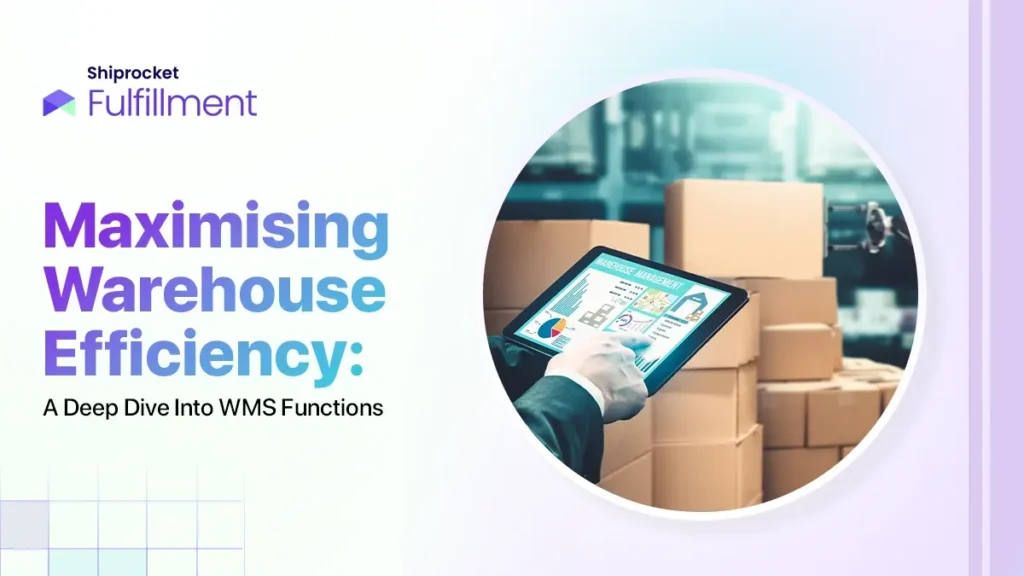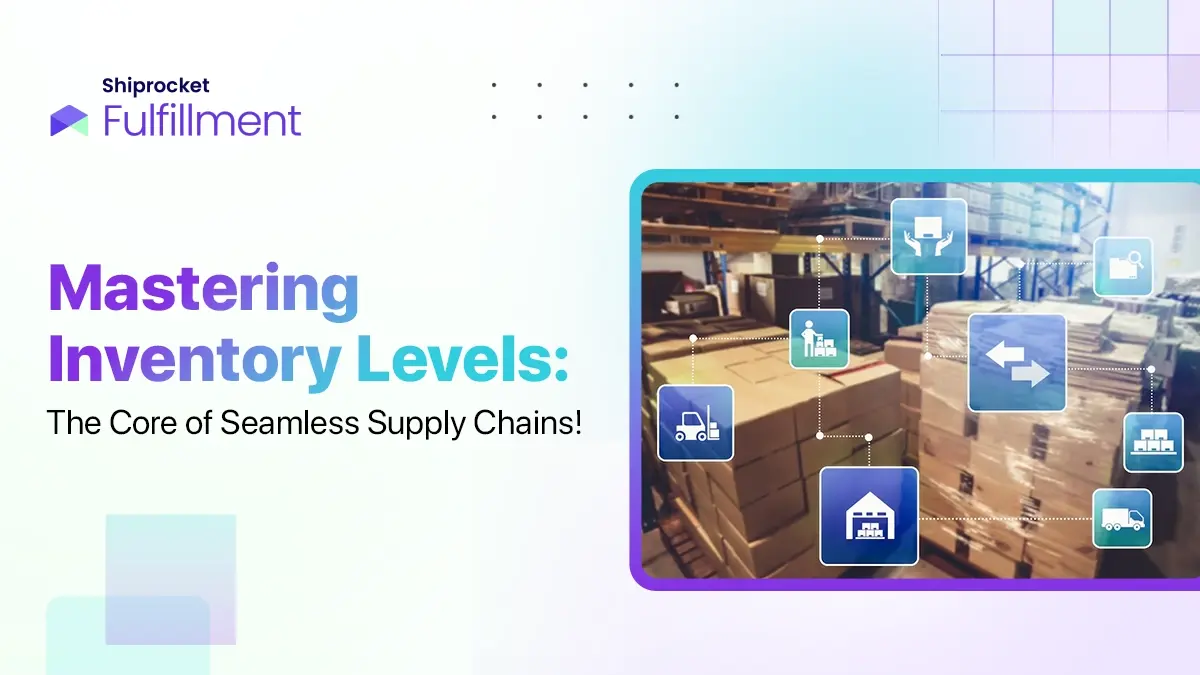After the COVID-19 pandemic, eCommerce has become more popular. The evolution of such platforms has made it extremely easy for non-technical entrepreneurs to launch online businesses. A recent study shows that the global eCommerce market is going to grow rapidly at a rate of 11.34% to reach USD 6 trillion in value by 2024.
Just like running any company, eCommerce businesses also come with their merits and demerits. With its immense popularity nowadays, the competition in this field has also become fierce. Hence, eCommerce business growth is accompanied by constant adaptations and adjustments. A business with the most agile supply chain strategies are the ones integrated with the best warehouse management systems (WMS). This helps them easily meet the rapidly rising consumer demand and sustain in this fiercely competitive market.
Let’s explore more about eCommerce WMS.

5 Non-Negotiable WMS Requirements for eCommerce
The requirements of a warehouse and most of the major steps involved in its management remain the same irrespective of the product being sold by a specific eCommerce business. A well-planned and established warehouse management system must be able to optimise and standardise all of the functions in a warehouse. Here is a list of the five non-negotiable WMS requirements for eCommerce:
- Inventory Management
Look for an eCommerce WMS that’s coupled with an inventory management system. This is necessary because it will ensure that your WMS is well-equipped with all the necessary tools you need to get complete real-time visibility into your inventory levels. An inventory management system can allow you to:
- Determine the actual count of inventory at the SKU level at all times
- Track inventory units from the time of procurement until the goods are delivered
- Map the physical location of SKUs in the warehouse
- Create and optimise counts of the inventory cycle
- Use barcode scanners and barcodes to get data and automatically update inventory records
Moreover, an eCommerce WMS combined with an inventory management system can help you restock inventory on time. You will also be aware of the right amount of inventory you’ll need to restock. This way, you’ll never understock or overstock goods.
- Picking and Packing of Inventory and Finished Goods
Your WMS must be optimised so your receiving and putaway processes are faster and more efficient. It must aid you in making your warehouse processes precise in all aspects. To elaborate further, your WMS must enable you to:
- Inspect and double-check your incoming shipments
- Count and confirm if the number of units within a shipment is correct
- Receipt and received token generation of arrived shipments
- Record the most recent storage locations of every inbound SKU within the storage unit
- Streamline the inventory receiving and putaway routes to minimise labour costs and maximise time utilisation
- Optimise all the cross-docking processes
- Shipping Your Orders
Shipping your orders is a part of the order fulfillment process, which is an essential component of supply chain management (SCM). It is the most critical activity within any warehouse, and hence, an extremely robust WMS is needed. To ensure proper order fulfillment, your WMS must be able to:
- Generate pickup lists automatically with the best possible routes to reduce the time spent on delivery.
- Support the best possible batch-picking strategy suited to your business
- Handle RFID devices along with other picking tools such that it makes it easier for labourers to locate and retrieve different items
- Employ box selection algorithms to enhance the packing processes for all orders
- Processing and Managing Returns
A robust and useful WMS must be able to not only prepare orders and ship orders but also facilitate your returns process management. It must help you:
- Receive and track returns
- Track the inventory of the orders returned
- Understand and designate what must be done with the returns
- Update and re-check the inventory levels post-returns are processed
- Labour Management and Reporting
When your WMS can manage your resources, it makes it easier for you to ensure that you are not overhiring or under-hiring staff. It allows you to speed up your processes and ensure smooth working of your supply chain. Furthermore, it also allows you to optimise operational costs and maximise profits. It helps you establish different KPIs and enables you to work toward them while monitoring their progress.
Reporting is another tedious manual task that can be eliminated through a well-defined WMS. WMS takes care of all the documentation processes for your warehouse and allows you to monitor its efficiency easily. All your performance metrics can be monitored to help you make your workflows more agile.
Determining Your Unique eCommerce WMS Prerequisites
Every business’s warehousing needs might vary. This can be due to the size and type of business or product manufactured. Here’s how you can understand what you might need in your WMS:
- Understanding the Working of WMS Solutions:
An understanding of how WMS solutions work will provide you with the necessary information to understand what exactly you will need from a WMS system to suit the needs of your warehouse. It enables you to set realistic expectations of what you can get out of a WMS solution employed. Generally, a WMS is a software application that contains different modules that are dedicated to a specific function.
- Assessing Different Operations in a Warehouse:
Any WMS software will offer you several tools and features. No matter how useful and efficient they may seem, you might not require all of those features and functions. Hence, it is vital to examine your most recent warehouse operations and assess the performance of those. This will allow you to understand the problems that your WMS must tackle clearly.
- Setting Goals and Budget:
After understanding which warehouse functions need improvement, prioritisation is crucial. Based on the goals you have set for your business in the near future, you must determine which problems must be tackled immediately and which can wait. Moreover, you must also set a budget for implementing a WMS for your eCommerce business. Ensure that the WMS with all the facilities you need fits your budget.
- Keeping an Eye on the Future:
Scalability and expansion are two key points you must keep in mind while choosing your WMS features. Even though your present challenges and needs are of key priority, keeping your eyes open to see what your future might need is also essential. This ensures that you can scale your business easily in the future.
- Privacy and Security Needs:
System failure and breaches in data are serious issues that can affect your warehouse operations largely. Hence, safety and security are critical when choosing your WMS software. Using cloud-based software can help address these concerns with the necessary security tools.
- Custom and Advanced Requirements for Your Business:
Customisability is something that must be considered while choosing your WMS. With each business having unique warehousing needs, it is vital that your WMS software can be tailored specifically to your requirements.
Achieving Ecommerce Success With Shiprocket’s WMS
Shiprocket offers WMS solutions to cater to your warehousing needs and optimise your SCM processes. They also provide cloud-based solutions for WMS needs, mainly designed for fulfillment and warehouse control functions. Here is how you can achieve success with Shiprocket’s WMS solutions:
- Enhanced Warehouse Layouts: Shiprocket helps you connect with their experts to help you identify the most optimal layout for your warehouses.
- Live Inventory Tracking: Shiprocket’s WMS solutions also give you complete visibility of the stock through their WMS dashboard. They also provide insights into the movement and sales of products over time.
- Advanced Analytics: Shiprocket’s solutions allow you to easily track and see warehouse performance KPIs. These metrics will allow you to identify where the warehouse is lacking and how it can be improved.
- Scalability: When you have a vision to scale your business rapidly, reach untouched markets, and become a global brand one day, Shiprocket’s solutions are the way to go. They provide optimisation and stability features to allow your business to expand seamlessly.
- Simple Interface: Shiprocket’s solutions are extremely simple to use and master. They have a very user-friendly interface, and hence, it is easy to navigate through it.
Conclusion
With manual warehouse management, it may become difficult to do it properly. Purchasing a warehouse management system (WMS) will relieve your warehousing workforce of tedious duties. You’ll be able to increase order accuracy as a result, ship consignments more quickly, and obtain the data required to run your warehouse operations as efficiently as possible. Furthermore, you can gain many advantages from flawless eCommerce warehousing and fulfillment by outsourcing warehouse management to a 3PL provider like Shiprocket.
The four types of warehouse management systems are standalone WMS, cloud-based WMS, supply chain WMS, and ERP WMS.
The benefits of implementing eCommerce WMS are better inventory turnover, improved customer service, lower labour costs, reduced shipping costs, higher fulfillment rates, real-time visibility into inventory, and better returns management.
Inventory management involves the optimisation and controlling of inventory levels of your business. On the other hand, warehouse management is the process of handling inventory and everyday activities carried out in a warehouse.








